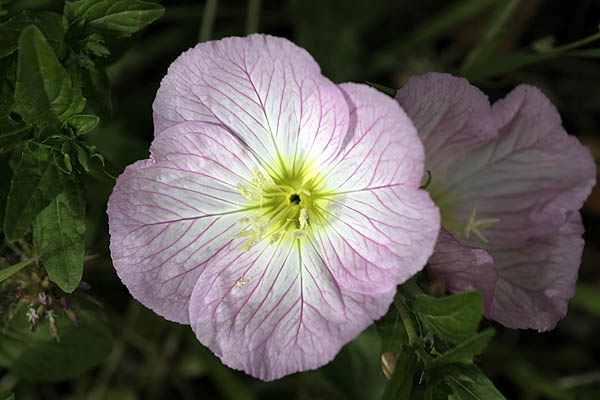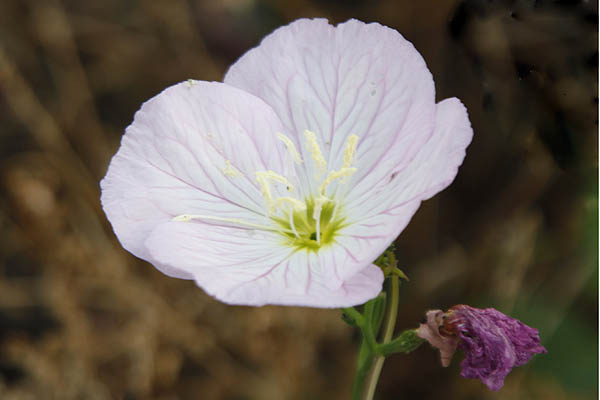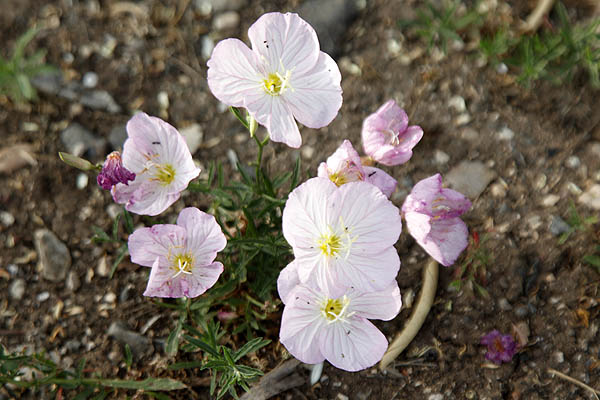Rose Evening Primrose, Rosy Evening-primrose, Pink Evening-primrose,
Hebrew: נר-הלילה הוורוד, Arabic: أخدرية وردية
| Scientific name: | Oenothera rosea Aiton | |
| Synonym name: | Hartmannia rosea (L'Hér. ex Aiton) G. Don | |
| Common name: | Rose Evening Primrose, Rosy Evening-primrose, Pink Evening-primrose | |
| Hebrew name: | נר-הלילה הוורוד | |
| Arabic name: | أخدرية وردية | |
| Family: | Onagraceae, Evening Primrose family, נר-הלילה |

|
| Life form: | Annual | |
| Stems: | 7-65 cm, ascending to decumbent, simple or branched, strigillose, sometimes with longer spreading hairs | |
| Leaves: | Alternate, entite; smooth margin | |
| Inflorescence: | Leafy spike | |
| Flowers: | The flowers open at sunrise; hermaphrodite; floral tube 4-10 mm; sepals 5-10 mm; pink to rose-purple petals with conspicuous darker veins, 5-12 mm; cream-colored anthers 2-3.5 mm; ovary usually densely strigillose; stigma surrounded by anthers | |
| Fruits / pods: | Capsules clavate or narrowly obovoid, 4-12 mm, valves angled or weakly winged, attenuate to slender sterile stipe (pedicel) 5-20 mm | |
| Flowering Period: | April, May, June, July, August, September, October, November | |
| Habitat: | Disturbed habitats (weeds) | |
| Distribution: | Mediterranean Woodlands and Shrublands | |
| Chorotype: | American | |
| Summer shedding: | Ephemeral |

Derivation of the botanical name: Oenothera, Greek, oinos, wine; thera, booty; wine catcher. The root when eaten was supposed to increase one's capacity for wine. rosea, rosy-colored Hartmannia, dedicated to Emanuel Friedrich Hartmann (1784- 1837), a German cryptogamist, later working in Louisiana. The Hebrew Name: נר הלילה, Ner-HaLaila, Night candle, the flowers open at night and at dusk they are visible in the distance hence their Hebrew name "Night candle".

|